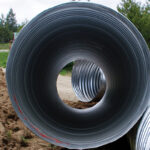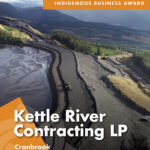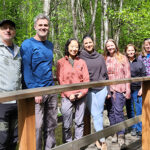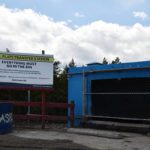Home »

Proposed electoral boundary changes hearings upcoming
Residents living north and west of Cranbrook, currently in the provincial Kootenay East riding, may soon find themselves living in the Columbia River-Revelstoke riding.
The BC Electoral Boundaries Commission (BCEBC) has issued recommendations for changing British Columbia’s provincial electoral districts for the next two provincial general elections in a preliminary report.
The BCEBC is in the final round of public consultation. A public hearing was held in Nelson today (Oct. 20) at the Prestige Resort and there are two upcoming virtual (Zoom) hearings on Friday, Oct. 21 and Nov. 8 if you would like to be heard on the proposed changes. Follow this link for more info about the meetings.
The Commission encourages British Columbians to read the recommendations and share their views. The Commission will consider amending its recommendations in light of the input it receives. Its final report must be released by April 3, 2023.
The Legislative Assembly will then decide whether to accept all, some or none of the Commission’s recommendations.
 Of local concern, the BCEBC is recommending removing areas including parts of JimSmith, New Lake, Silver Creek and Wycliffe to be added to Columbia River-Revelstoke “to better balance the population between the Kootenays ridings.”
Of local concern, the BCEBC is recommending removing areas including parts of JimSmith, New Lake, Silver Creek and Wycliffe to be added to Columbia River-Revelstoke “to better balance the population between the Kootenays ridings.”
The BCEBC said it does not propose changes to Kootenay East’s southern, eastern or western boundaries.
“We propose an adjustment north and west of Cranbrook to move some of the population currently in Kootenay East into Columbia River-Revelstoke. The core of the City of Cranbrook remains in the Kootenay East riding,” it noted in the report.
“British Columbia is a growing province,” said Justice Nitya Iyer, Chair of the Commission. “The population has increased by more than 300,000 people over the last five years. Our recommendation to increase the number of electoral districts in B.C. reflects that growth.”
 The preliminary report provides a look into how proposals for change were considered for local ridings.
The preliminary report provides a look into how proposals for change were considered for local ridings.
“The population of the Kootenays is growing more slowly than the provincial average, and the populations of both Columbia River-Revelstoke and Nelson-Creston currently fall more than 25% below the electoral quotient. Many people expressed concern that we might propose reducing the number of electoral districts in this area. Residents pointed to travel and communication barriers that currently impede effective representation. Some stressed the different identities of the East and West Kootenay, and others suggested changes to recognize links between specific communities,” the report states.
“Following our mandate, we first considered whether it made sense to propose reducing the number of ridings to three from four. It quickly became clear that fewer ridings would create even greater barriers to effective representation by making it harder for constituents and their MLAs to interact.
“In addition to the challenging transportation routes, some of which require ferry travel, the area faces severe seasonal weather. Internet and cellular connectivity is limited outside of the larger centres and we heard that these networks often do not extend to rural homes.
“We explored removing Revelstoke and Golden from the Columbia River-Revelstoke riding and adding them to Salmon Arm-Shuswap in the Interior area. However, Revelstoke and Golden are only connected directly to the Shuswap area by Highway 1, which traverses the Monashee and Selkirk Mountains. This highway is subject to severe weather conditions including frequent winter closures. Commercial air travel into these communities is unavailable,” the report explained.
“We rejected dividing the population of the Nelson-Creston riding between the three other Kootenays electoral districts for the same reasons. We concluded that effective representation for this area of the province requires four electoral districts.
“Our proposed electoral boundary adjustments reduce the differences between the populations of each of this area’s ridings, and bring the population of all four districts within the usual deviation range.”
All public input on the proposed changes must be received by 11:59 p.m. on Nov. 22, 2022.
Maps from BCEBC preliminary report
e-KNOW







